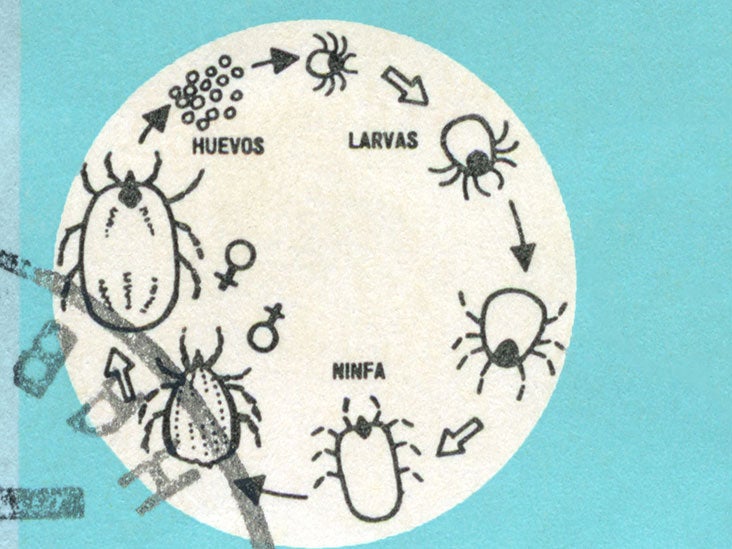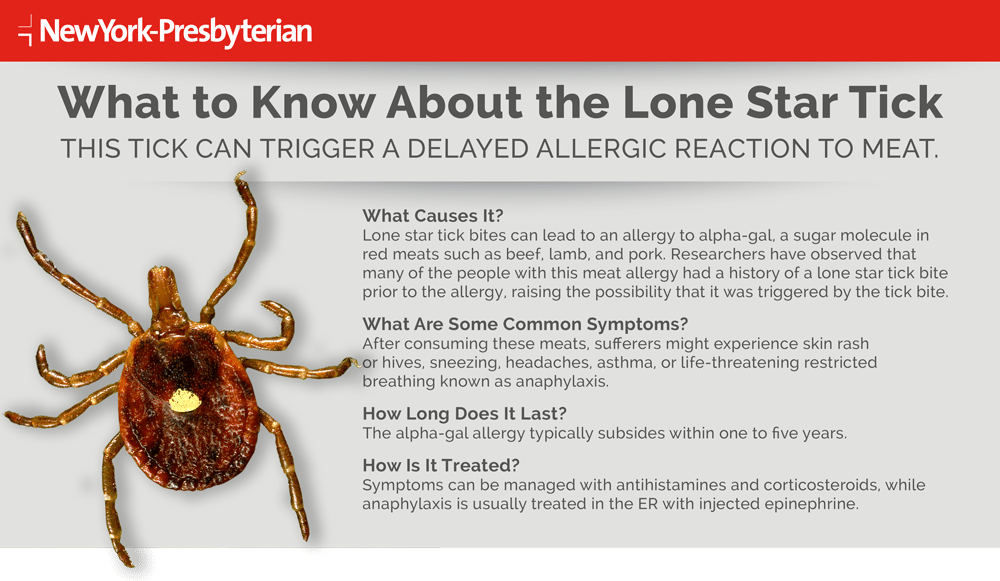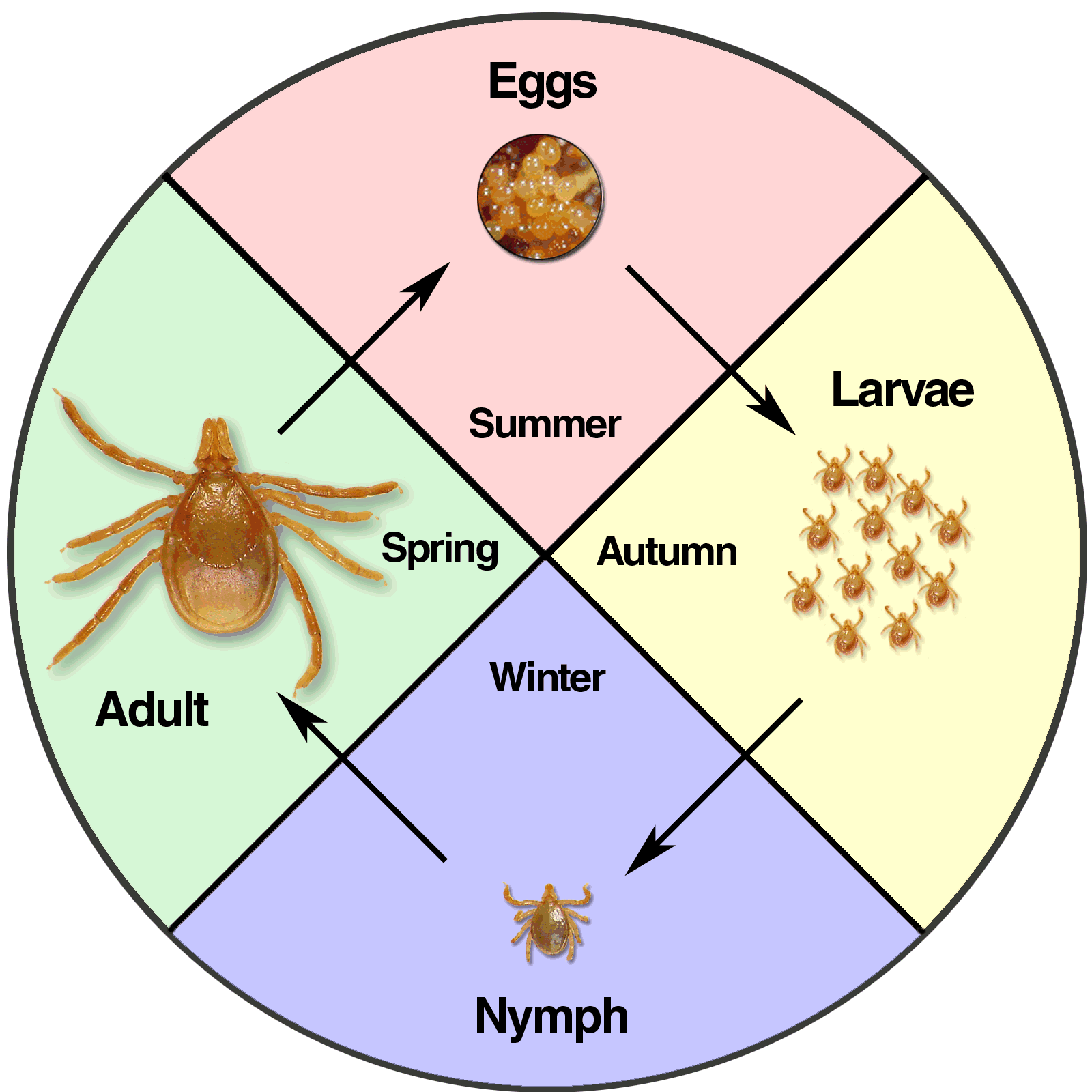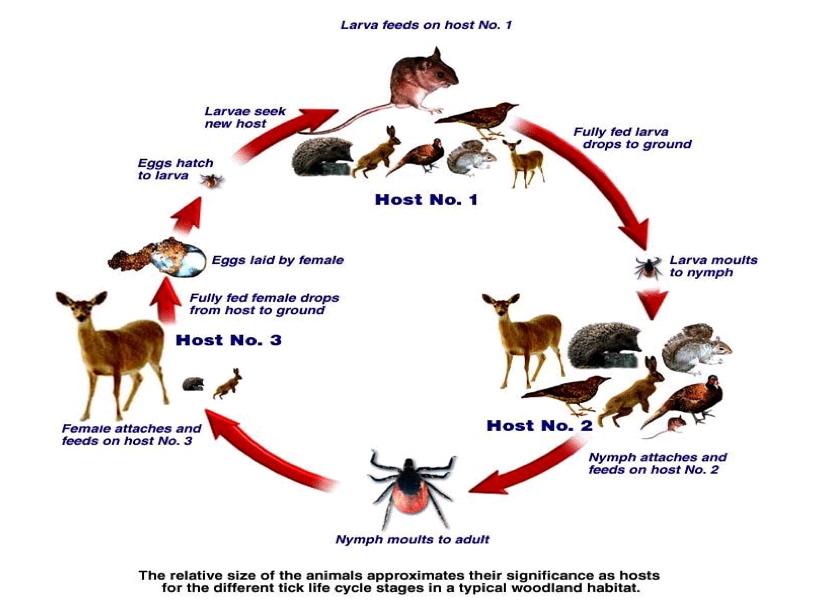tick life cycle uk
The ticks will dry out and die within 24 hours. A hot room or on a hot windowsill.

Trek Tragedy Review On Lyme Disease Rcemlearning
Requires high humidity almost saturation to prevent dehydration on the ground so it tends to be found in wetter areas particularly in the West and Northern England and Scotland.
. DO THE TICK CHECK Ticks prefer warm moist dark areas of the body. Now let us look at their life cycle to get a better understanding. University laboratory FASTEST results no kit.
Egg larva nymph and adult and a three host. Ticks have four stages of their life cycleeggs larvae nymphs and adult ticksand every stage except the eggs feeds on blood. The life cycle takes up to 12 years.
These stages are egg larvae or seed tick nymph and adult. Egg larva nymph and adult. Feeds once at each developmental stage and as the tick often feeds only once a year in the uk the whole cycle from egg to adult can take three years.
Ticks hatch from there eggs in the spring or summer months. All three tick families ticks have four lifecycle stages. The Brown Dog Tick Rhipicephalus sanguineus has been brought into the UK from Europe on dogs and can survive and reproduce inside a home unlike the native UK ticks.
Aside from its missing set of legs the larva looks a lot like an adult tick. It finds a host sucks blood and hides in vegetation. This is the safest way to handle your outdoor clothing as ticks can survive a full cycle in the washing machine.
Its important to be familiar with this life cycle to get rid of ticks from your lawn and landscape and prevent tick bites. Ad Try a Chewable That Kills The Ticks That Transmit Lyme Disease Other Parasites. The eggs hatch and six-legged larvae emerge from the eggs.
When the egg hatches a six-legged larva emerges. Larvae nymphs and adults. Egg six-legged larva eight-legged nymph and adult.
The tick egg hatches out into a larva. The cycle begins with an adult female laying eggs in the shelter of grass from which larvae will hatch when the weather warms in spring. Feeds once at each developmental stage and as the tick often feeds only once a year in the UK the whole cycle from egg to adult can take three years.
A tick begins its life as an egg. Tick biology and ecology Ticks in the UK Tick-borne Disease in the UK National Tick Survey Lifecycle of a tick Tick life cycle Tick life cycle Environmental Conditions Suitable habitat moorland woodland etc Host availability Soil threshold temperature. Lifecycle of a tick.
During this development ticks go through four stages of life. Each stage needs an animal host on which to feed before it can moult to the next stage or in the case of the adult females lay eggs. In essence each large feed will give them the blood meal necessary for them to grow into the next stage.
Without blood ticks cant do any of this. The life cycle of a tick is completed after four stages namely egg larva nymph and adult it requires more than a year to complete a full life cycle. This means that tick larvae and nymphs as well as full-grown adult ticks need to bite a host such as a human or a wild animal and suck its blood in order to survive.
It may be helpful to have someone else. Check the whole body. Generally adult female hard ticks breed while on the host animal and then drop to the ground to lay eggs.
Ticks go through four life stages. The First Stage egg The adult female tick first fulfills a proper blood meal then the process of mating occurs between an adult male and adult female tick. Ixodes ricinus is a three-host tick with larvae nymphs and adults feeding on different hosts.
The tick life cycle is made up of three active stages. Since there are so many different tick species the duration of this life cycle varies greatly from a. After hatching from the eggs ticks must eat blood at every stage to survive.
Ticks are a clear illustration of how food works as an energy source. Ticks belonging to the Ixodidae family undergo either a one-host two-host or three-host lifestyle. They mate suck blood and the female lays eggs.
Larvae nymph adult and egg. Sucking ticks are almost exclusively found during spring and autumn. They need the dry to die.
Ticks need energy from blood in order to grow develop and lay eggs. There are four stages to a ticks life-cycle. Ticks that require this many hosts can take up to 3 years to complete their full life cycle and most will die because they dont find a host for their next feeding.
The life cycle takes on average three years to complete. Their life cycle takes several different transitions. Use a Chewable Proven to Kill the Ticks That Transmit Lyme Disease More.
1 The Egg Stage 1 After the adult female tick has acquired a proper blood meal she mates with the adult male tick leaves the host and searches for a suitable spot to lay her eggs. In some species all stages take place on the same host. In the USA the highest risk comes from the Deer tick Ixodes scapularis but this is not known in Europe.
The life cycle of a tick can be divided into four sections. Ixodes scapularis the black-legged deer tick which is the primary vector for Lyme disease has a four-stage life cycle and a lifespan of about two years. Life Cycle of Ticks.
Ticks locate potential hosts by sensing odor body heat moisture andor vibrations in the environment. Generally there are two peaks of tick activity in the spring and in the late summerautumn. 17-20C Relative humidity above 80 Ticks as disease vectors.
Most ticks go through four life stages. We would like to show you a description here but the site wont allow us. After hatching the newly-born tick larva requires a blood meal to advance to the next stage of life as a six-legged nymph.
The tick requires a blood meal to evolve into each stage of its life. A tick starts life as an egg and because tick mortality is so high the female tick lays as many as 18000 eggs in the ground. The last stage is adult males and females.
Many ticks go through a three host life cycle meaning that they parasite three different host bodies during their lifetime. Stages in the Life Cycle of Ticks. After hatching from the eggs ticks must eat blood at.
Ad Test your tick for Lyme disease. The larva has only six legs. All ticks whether they are hard or soft undergo four developmental stages namely egg larva nymph and adult.
Ticks have four stages to their lifecycle namely egg larva nymph and adult. The majority of hard ticks require three different hosts to complete their development. Larvae and nymphs prefers small to medium-sized animals and adults tend to feed on larger animals such as sheep.
They overwinter under moss and other undergrowth.

What Are Seed Ticks And Are They Dangerous
Ticks Effects Control And Life Cycle

Tick Season Is Upon Us Larkmead Veterinary Group

Tick Vector An Overview Sciencedirect Topics
The Life Cycle Of The Tick From Eggs To Ambush American Kennel Club

Lyme Disease What You Need To Know Cycling Uk

Deer Tick Life Cycle Lyme Disease In Dogs Ticks Lyme Disease

Flea And Tick Mostly Cats Veterinary Clinic 815 885 2200
Ticks Effects Control And Life Cycle

The Tick Life Cycle Printed With Permission From Jeremy Gray Eucalb Download Scientific Diagram
9 Types Of Ticks And How To Identify Them Mega Guide Bug Lord

Multimedia Gallery From Nymphs To Larvae To Adults Ticks Are Looking For Meals Nsf National Science Foundation

A Guide To Ticks Three Species Found In The Northeast

An Overview Of Tick Paralysis Symptoms Treatment And Prevention

Conceptualizing The Digital Life Cycle
Life Cycle Visa Vis Symposiums


